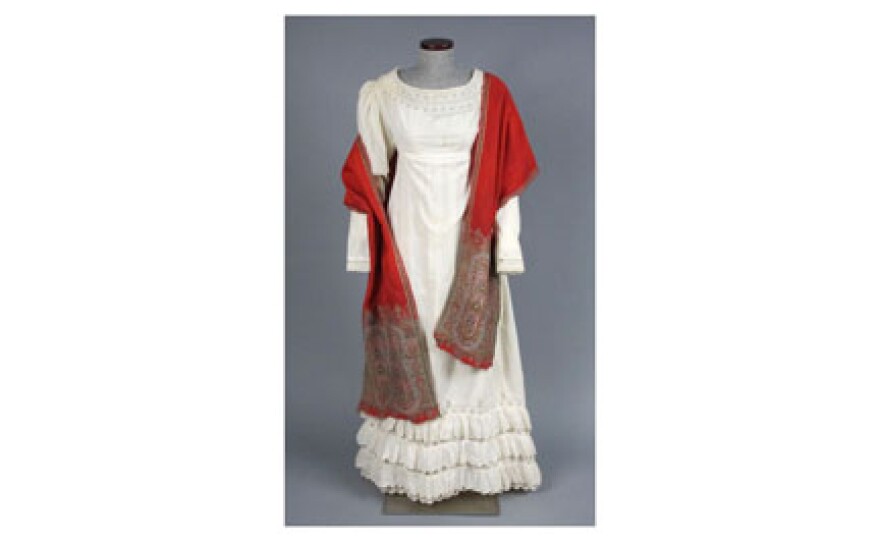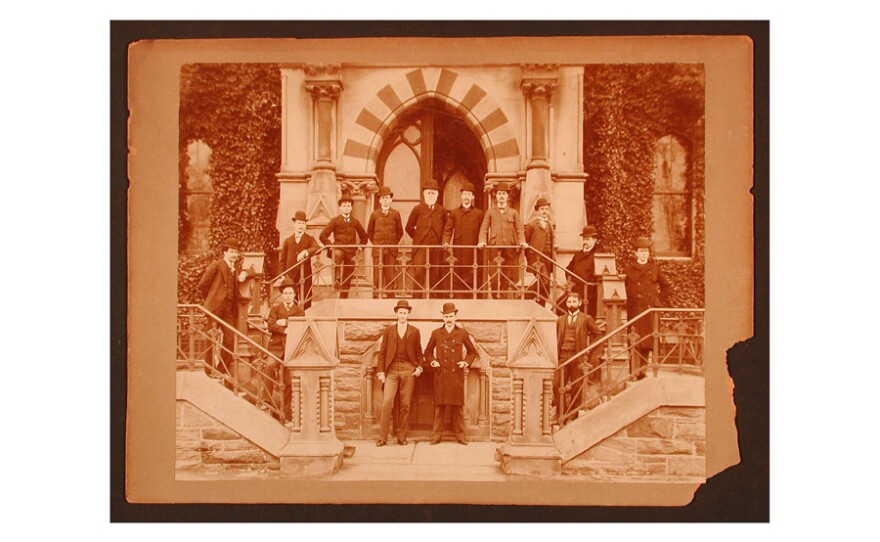Mankind has always attempted to ward off the weather with protective clothing. Throughout history fashions have influenced the types of outerwear people used to keep themselves warm.
While capes and coats are outdoor wear, worn to protect against nature’s fury, shawls provide warmth from the winter chill inside. By modern standards, 18th- and 19th-century homes were far from warm, and shawls were both popular and practical. Shawls from Kashmir became fashionable at the turn of the 19th-century, as trade with India increased. These shawls, produced by talented male weavers were handmade and expensive, so Europe began to produce looms that could imitate the design making it faster and cheaper.
Both men and women have employed capes, or cloaks, for warmth throughout history. Capes come in a variety of styles, from simple rectangular pieces of cloth to elaborately trimmed cloaks. During periods of elaborate fashions, women often favored cloaks as a way to stay warm without crushing the delicately trimmed gowns beneath them.
Although men also used capes to keep warm, they often preferred more fitted outer garments. Cut closer to the body than capes, coats were often made by skilled tailors. Gentlemen’s coats could be either single or double breasted, fitted or loose, and knee or full length depending on the fashions of the time. Coats for women became popular during the bustle period in the late 19th-century, and were often equipped with a cut-out at the back to accommodate the bustle.
Each historical period has had its own fashionable style of outerwear, and each style has had its own name, from mantle to paletot and pelisse to great coat. Yet, all these garments served the same purpose, to keep people warm when the weather got cold. Visit Making Connecticut, the current exhibition at The Connecticut Historical Society, to discover more about how people survived winters in New England. For more information, go to www.chs.org.







